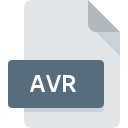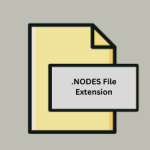.LWV File Extension

Linguistically Enhanced Sound File
| Developer | Microsoft |
| Popularity | |
| Category | Audio Files |
| Format | .LWV |
| Cross Platform | Update Soon |
What is an LWV file?
In the world of digital technology, file extensions are the alphabets that compose the language of computers. One such intriguing extension is .LWV, short for Linguistically Enhanced Sound File.
This file format, although not as ubiquitous as the popular MP3 or WAV, has its unique characteristics and applications that make it an essential topic for discussion.
More Information.
Nuance Communications introduced the .LWV file extension to serve as a container for storing audio data with enhanced linguistic information.
These linguistic enhancements were aimed at improving speech recognition, language modeling, and voice analysis applications.
.LWV files were used primarily for research and development in linguistics and speech technology.
Origin Of This File.
The .LWV file extension is not as commonly recognized as others, which prompts the question: Where did it originate?
The .LWV file extension was developed by Nuance Communications, a company specializing in speech recognition and artificial intelligence technologies.
It was primarily designed to support the requirements of Nuance’s linguistic products and services.
File Structure Technical Specification.
To fully understand .LWV files, it’s crucial to delve into their internal structure and technical specifications:
- Audio Data: .LWV files contain audio data, which can be encoded using various audio codecs. Commonly, they use codecs like PCM, ADPCM, or even proprietary codecs designed by Nuance.
- Linguistic Information: The unique feature of .LWV files is their ability to store linguistic information along with the audio. This includes phonetic transcriptions, speaker identity, language models, and other data that aids in linguistic analysis.
- File Header: .LWV files start with a file header that contains metadata such as sample rate, audio codec information, and linguistic metadata.
- Sample Rate: The sample rate of .LWV files can vary, but it is typically 16 kHz or 22 kHz to ensure high-quality audio for linguistic analysis.
- Compatibility: .LWV files are primarily compatible with Nuance’s software and linguistic analysis tools. However, they can be converted to other more common audio formats for broader use.
How to Convert the File?
Converting .LWV files to more common audio formats can be essential for wider compatibility and usage. Here are the steps to convert an .LWV file:
Option 1: Use Nuance Software (Recommended if available):
If you have access to Nuance software, this is the most straightforward and reliable method for converting .LWV files to other formats.
Nuance provides tools that can open .LWV files and export them to widely supported audio formats like WAV or MP3. Here’s how to do it:
- Open the Nuance software that you have installed on your computer. This could be software like Dragon NaturallySpeaking, Dragon Professional, or any other Nuance product that supports .LWV files.
- Within the Nuance software, look for an option to open or import an .LWV file. This option may be found in the File menu or a similar location.
- Once you have the .LWV file open in the Nuance software, go to the File or Export menu, and select an export or save option. Choose the desired audio format (e.g., WAV or MP3) as the output format.
- Follow the on-screen instructions to specify the export settings, such as audio quality and file location.
- Click the “Export” or “Save” button to initiate the conversion process. The software will convert the .LWV file to the chosen audio format and save it to your specified location.
Option 2: Use Third-Party Converters:
If you don’t have access to Nuance software or prefer a more versatile approach, you can use third-party audio conversion software to convert .LWV files to other formats. Here’s how to do it using third-party converters:
- Download and install a reputable audio conversion software that supports .LWV files. There are many free and paid options available online, such as Audacity, Freemake Audio Converter, or Format Factory.
- Open the audio conversion software after installation.
- Look for an option to add or import files. This option is usually labeled “Add Files” or something similar. Use it to select and import the .LWV file you want to convert.
- Once the .LWV file is imported, specify the output format you want. Most audio converters allow you to choose from a variety of formats, including WAV, MP3, FLAC, and more.
- Configure any additional settings, such as audio quality or bitrate, if desired.
- Choose a destination folder where you want the converted file to be saved.
- Start the conversion process by clicking the “Convert” or “Start” button. The software will convert the .LWV file to the selected format.
- Once the conversion is complete, you can locate the converted file in the specified destination folder.
Option 3: Manual Recording (Not Recommended):
If you have no access to Nuance software or third-party converters, you can resort to manual recording of the .LWV file’s playback using audio recording software. This method is less convenient and may result in a slight loss of audio quality. Here’s how to do it:
- Open an audio recording software on your computer. Popular options include Audacity (available for free) or Adobe Audition (a paid option).
- Start playing the .LWV file on your computer using a media player or the default system player.
- In the audio recording software, initiate a new recording session. Set the recording source to capture the sound playing from your computer’s speakers or audio output.
- Start recording while the .LWV file is playing. Ensure that you capture the entire duration of the file.
- Stop the recording once the .LWV file has finished playing.
- Save the recorded audio in the desired format, such as WAV or MP3.
Advantages And Disadvantages.
Advantage:
- Linguistic Analysis: .LWV files excel in linguistic analysis due to their ability to store linguistic metadata alongside audio. This makes them invaluable in fields like phonetics and speech recognition.
- Speaker Identification: Linguistic enhancements in .LWV files can aid in speaker identification, making them useful in forensic investigations and voice analysis.
- Language Modeling: These files contribute to the development of more accurate language models for natural language processing tasks.
Disadvantage:
- Limited Compatibility: One of the main drawbacks is their limited compatibility with mainstream media players and audio editing software. This can make it challenging to work with .LWV files without specialized tools.
- File Size: .LWV files tend to be larger in size compared to some other audio formats due to the inclusion of linguistic information.
- Proprietary Nature: The .LWV file format is proprietary to Nuance Communications, which means users are somewhat dependent on Nuance’s tools for working with these files.
How to Open LWV?
Open In Windows
- Use Nuance software if available, as mentioned earlier.
- Alternatively, consider using third-party audio conversion software that supports .LWV files to convert them into more common formats like WAV or MP3.
Open In Linux
- On Linux, you may need to use third-party audio conversion software that can handle .LWV files or explore the possibility of running Nuance software through compatibility layers like Wine if it’s supported.
Open In MAC
- If you have access to Nuance software on a Mac, follow the steps mentioned earlier for Windows.
- Otherwise, you can try using third-party audio conversion software that supports .LWV files to convert them into formats compatible with macOS media players.
Open In Android
- Opening .LWV files on Android may be challenging due to their proprietary nature. You can consider converting .LWV files to a more common audio format (e.g., MP3 or WAV) on a computer.
- Then transferring the converted file to your Android device for playback using a compatible media player app.
Open In IOS
- Similar to Android, opening .LWV files directly on iOS devices can be challenging. Convert .LWV files to a more common audio format using a computer, and then transfer the converted file to your iOS device for playback using a compatible media player app.
Open in Others
- For other operating systems, the approach may vary. If you have access to Nuance software compatible with the respective operating system, use that for opening .LWV files.
- If not, explore third-party audio conversion software that may support .LWV files, or consider using compatibility layers or virtual machines to run Windows software that can handle .LWV files.













